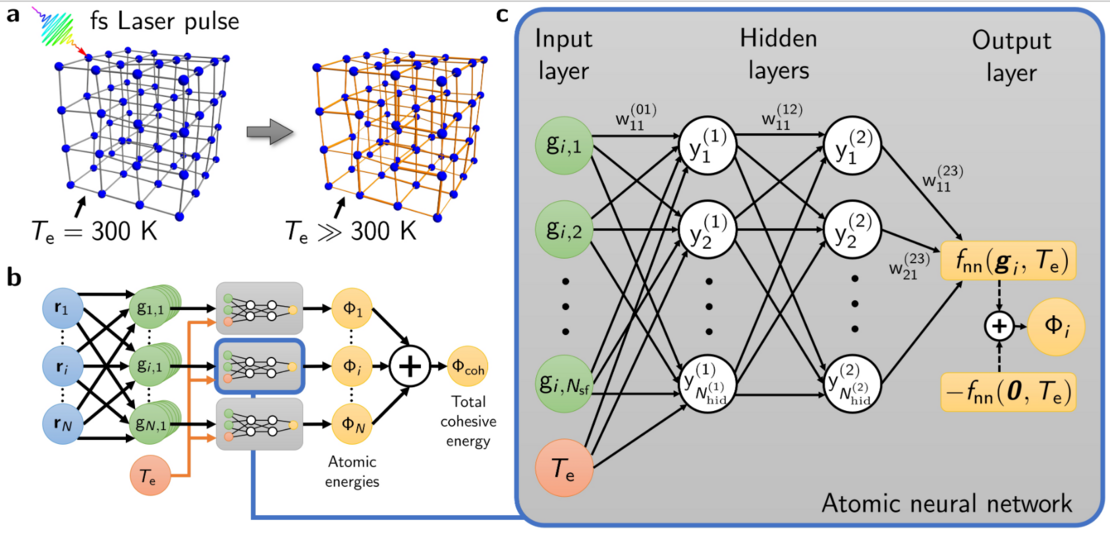Meldung
Artificial intelligence enables simulation of millions of atoms under laser excitation
 Image: Uni Kassel.
Image: Uni Kassel.Ultrashort laser pulses with a pulse duration of a few femtoseconds (1 femtosecond = 10-15 seconds) are an essential tool in many areas of research and industry: in addition to the experimental observation of ultrafast physical phenomena in the laboratory, these lasers are also used in surgery and for high-precision material processing in the microelectronics and photovoltaics industries. Extensive atomic simulations of such processes are essential for the development and support of experiments and practical applications. However, physical simulations that take quantum mechanics into account require an enormous amount of computing power and are limited to a maximum number of around 1000 atoms - too few for the relevant length scales.
Neural networks learn to predict the movements of atoms
Modern machine learning approaches make it possible to learn and reliably predict complicated relationships from large data sets. Results from physical simulations, for example, can be used to train neural networks to predict the movements of atoms based on the positions of their neighboring atoms. Researchers from Prof. Dr. Martin Garcia's working group at the University of Kassel have now succeeded in extending this method to the simulation of laser-excited materials. The crucial point here is the consideration of the electronic temperature, which depends on the strength of the laser pulse. The pulse duration is so short that initially only the light electrons are affected by the femtosecond laser, while the heavier atomic nuclei remain "cold". Neural networks that include the electronic temperature as an additional parameter for predicting the atomic movements alongside the positions of the neighboring atoms can be used to precisely simulate the laser excitation of materials on a large scale and with little computational effort.
Use of AI enables ultra-large-scale simulations of laser processes
In their publication, the researchers show that many important physical properties can be reproduced with high accuracy by artificial intelligence. They demonstrate the potential of the new model using a thin silicon film as an example: a simulation of more than a hundred thousand atoms shows that surface impurities can be removed with the help of femtosecond lasers. "Due to the high computational efficiency of the model, even simulations with millions of atoms or more are possible, which would be unthinkable with purely physical methods," explains Pascal Plettenberg, one of the authors of the publication. "The method can also be easily transferred to other materials and could play an important role in future research into the effects of ultrashort laser pulses."
The third author of the study is Dr. Bernd Bauerhenne. The project was supported by the German Research Foundation (DFG) through grant GA 465/27-1.
More information:
The article Neural network interatomic potential for laser-excited materials has now been published in the journal Communications Materials:
https://www.nature.com/articles/s43246-023-00389-w
Contact:
Prof. Dr. Martin E. Garcia
University of Kassel
Faculty of Mathematics and Natural Sciences
Department of Solid State and Ultrafast Physics
Phone: +49 561 804-4480
E-mail: garcia[at]physik.uni-kassel[dot]de